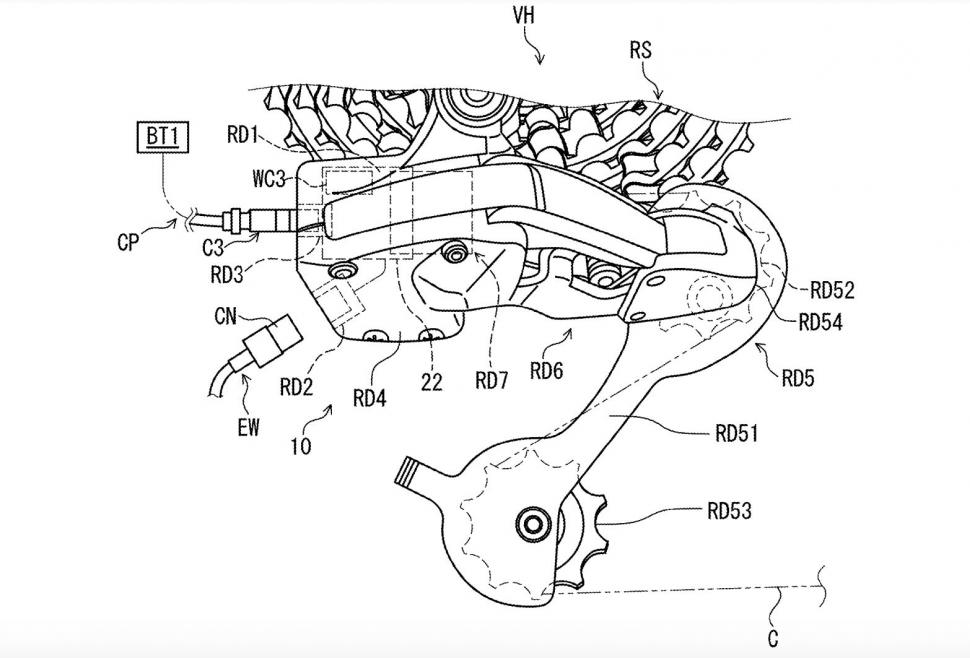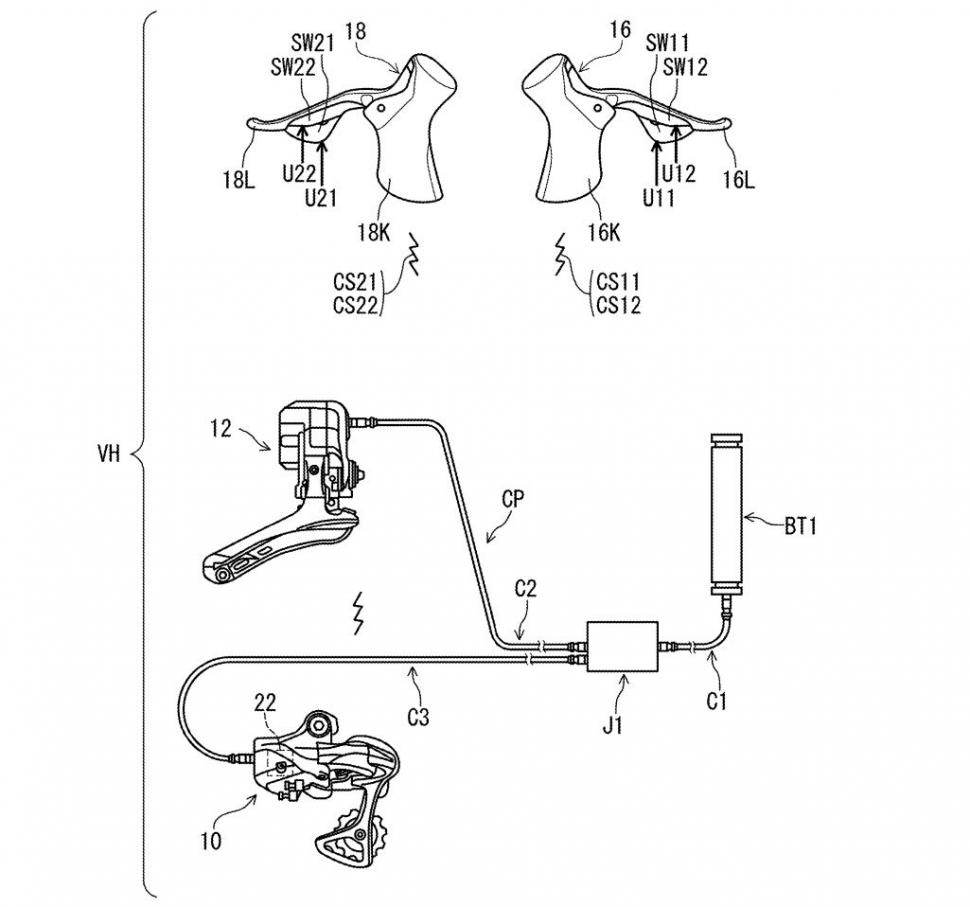- News
- Reviews
- Bikes
- Accessories
- Accessories - misc
- Computer mounts
- Bags
- Bar ends
- Bike bags & cases
- Bottle cages
- Bottles
- Cameras
- Car racks
- Child seats
- Computers
- Glasses
- GPS units
- Helmets
- Lights - front
- Lights - rear
- Lights - sets
- Locks
- Mirrors
- Mudguards
- Racks
- Pumps & CO2 inflators
- Puncture kits
- Reflectives
- Smart watches
- Stands and racks
- Trailers
- Clothing
- Components
- Bar tape & grips
- Bottom brackets
- Brake & gear cables
- Brake & STI levers
- Brake pads & spares
- Brakes
- Cassettes & freewheels
- Chains
- Chainsets & chainrings
- Derailleurs - front
- Derailleurs - rear
- Forks
- Gear levers & shifters
- Groupsets
- Handlebars & extensions
- Headsets
- Hubs
- Inner tubes
- Pedals
- Quick releases & skewers
- Saddles
- Seatposts
- Stems
- Wheels
- Tyres
- Health, fitness and nutrition
- Tools and workshop
- Miscellaneous
- Tubeless valves
- Buyers Guides
- Features
- Forum
- Recommends
- Podcast
TECH NEWS
 Shimano Dura Ace 9200 rear derailleur patent
Shimano Dura Ace 9200 rear derailleur patentPatent applications confirm Shimano Dura-Ace is 12-speed and semi-wireless
New US patent applications seem to confirm rumours that the much-anticipated Shimano Dura-Ace Di2 9200 groupset is a semi-wireless 12-speed system, or at least make this a whole lot more likely.
> New Dura-Ace shifter spotted? Plus what we want to see on new Dura-Ace
‘Semi-wireless’ means that the dual-control shifters communicate wirelessly with derailleurs that are wired to one another.
This patent application published today for an ‘operating device for human-powered vehicle’ – these things are never written in plain English – shows that each shifter contains its own ‘replaceable and/or rechargeable battery' and wireless communicators that generate encrypted signals.
It shows a coin cell battery slotting into a mounting in the hood, so we can be pretty confident that the next generation of Dura-Ace Di2 will be similar to SRAM in this respect.
According to this and other patents, it looks like the method of shifting remains the same as previously, via two switches located behind the brake lever and a hidden button at the front of the hood.
Another Shimano patent application shows a rear derailleur that contains a wireless communicator in ‘the unit mounting portion’ (it's marked WC3 here), suggesting that this is how the shifters will communicate with the rear derailleur. It looks like the front derailleur is controlled via wire from the rear derailleur.
A single internal battery provides the power to move both derailleurs. Patent applications describe a battery in the bike’s seatpost although the location is not limited to this position.
> Your complete guide to Shimano road bike groupsets
Loads of Shimano patent applications relating to road components have been published since the start of March and they all show a 12-speed system, so an increase from 11 on the existing 9100 version is certain.
This US patent application describes an ‘operating system for a human-powered vehicle’. A picture paints a thousand words…
As you can see, the two derailleurs are connected to a battery (that looks very like the current internal Di2 battery) via a junction box.
We're expecting Shimano to launch 9200 Dura-Ace Di2 sometime this year, but we couldn't give you a date for it.
Mat has been in cycling media since 1996, on titles including BikeRadar, Total Bike, Total Mountain Bike, What Mountain Bike and Mountain Biking UK, and he has been editor of 220 Triathlon and Cycling Plus. Mat has been road.cc technical editor for over a decade, testing bikes, fettling the latest kit, and trying out the most up-to-the-minute clothing. He has won his category in Ironman UK 70.3 and finished on the podium in both marathons he has run. Mat is a Cambridge graduate who did a post-grad in magazine journalism, and he is a winner of the Cycling Media Award for Specialist Online Writer. Now over 50, he's riding road and gravel bikes most days for fun and fitness rather than training for competitions.
Latest Comments
- slc 5 min 2 sec ago
I enjoy the way that motor traffic reduction opposers (always) claim that their concern is entirely about congestion and air pollution near...
- Steve K 5 min 41 sec ago
There is. But having seen in my professional life how it failed to hold councillors to account for some pretty awful things they said about...
- Rendel Harris 7 min 37 sec ago
They've been removed now (see picture August '24), as per my comment below I think they were there to guard against cyclists riding through a blind...
- mdavidford 20 min 28 sec ago
It does have a lamp on it though...
- mdavidford 30 min 29 sec ago
If you're going to be ripped off, you should at least know how much you're being ripped off to the tune of....
- SecretSam 2 hours 16 min ago
I've just bought a second hand Mason but that 105 mechanical Strael looks a seriously good deal. Deeply pretty bike and I love the company ethos.
- andystow 5 hours 38 min ago
Ok, just noticing this on my own bike. The rear wheel I bought from wheelbuilder.com. The front I rebuilt on my existing SON hub with a rim ordered...
- jamesha100 10 hours 52 min ago
This is so sad but also so sadly familiar. I am not sure whether more punitive sentences - e.g. life driving bans - would make any difference but...


Add new comment
8 comments
This is getting a little bit dull. Not sure if it was this site or their 'friends' Bike Radar who did the story several times a while back around Shimano's 100th anniversary - claiming, as I recall (probably slightly inaccurately), that 12-speed wireless was on the way to coincide with that. Anyway, now the release date is 'this year' but as it's not been spotted on pro bikes or in any internet/social media leaks I doubt it's coming any time soon.
Of the 3 patents seen today, you only comment on the button battery?
Do not you talk about more things that are seen in those 3 patents?
shifters are seen with different shapes / solutions,.....
there is a rim brake version...............
A mere patent application confirms no such thing. I suggest re-wording the title.
Compared to the clean lools of an AXS setup, still using connecting wires & junction boxes just seems old-tech. Bit underwhelmed if this is the final design (not that I'll be buying dura ace anytime soon!)
Wired is still the gold standard for anyone who truly values reliability. While AXS is good, Di2 is fantastic - there's a reason all the pro teams who don't have a groupset sponsor end up buying Shimano.
The only semi-wired setup that makes sense is having each shifter be wireless and operated by a coin-cell battery, and then having both derailleurs be wired together, sharing a common wireless connection to the shifters, and being powered by a hidden frame battery. That would greatly simplify existing Di2 installs and wiring while retaining the primary benefit of having a large hidden frame battery.
I was thinking the same - so I had a look...
Di2 and AXS both run at 7.4V, so we can directly compare their mAh capacity.
Di2 is 500mAh and AXS 300mAh - but you have two if running a front mech, so 600mAh total (the weight is the same too).
So, Di2 actually has a smaller battery! (if the data I found on the web is correct)
But the wired Di2 lasts a whole lot longer between charges than AXS. Could the reason AXS drains faster be purely down to the wireless function? The shifters only transmit when pressed, but the junction box / mech has to be listening for a signal all the time you're riding (and perhaps a motion sensor putting it into a low power mode when not being used).
It could be that adding wireless to Di2 has a significant impact on battery life.
I'm now thinking if you're going to go wireless, it's a better option to bung the batteries on the mechs. At least that allows you to swap a battery easily.
I wonder how you charge the battery.
Edit: looks like there's a connector on the rear mech.
Yes. In the middle pic, EW is 'electric wire' and CN is 'connector'.
One of the options Shimano suggests is that it could be a USB connection, although that's just an example.